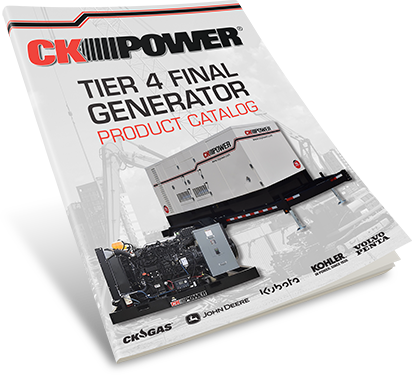You can see all of our mobile generators here, or you can download our mobile Tier 4 generator brochure here. The following article provides guidelines for understanding the EPA’s Tier 4 regulations, and how they apply to mobile power generators.
Mobile generator sets for prime power applications, like power generation in many of the markets we serve, are in a time of transition. The deadline for the implementation of final Tier 4 standards is fast approaching, and mobile power generators fall squarely under the umbrella of applications affected.
Partly because of the price increase that will accompany larger Tier 4 generators, and partly because of the large window for implementation, many manufacturers of mobile power generators have been slow to respond with products that satisfy the new emission criteria.
But whether the market is oil and gas, utilities, telecommunications, construction or rental, the demand for off-the-grid power isn’t going anywhere, and the EPA’s new emission regulations are coming whether manufacturers are ready or not.
Diesel vs. natural gas mobile power generation
Why not avoid the whole business and switch to a natural gas mobile power generator? It’s certainly a reasonable question and one our customers are right to ask. But, the fact is, natural gas generators are not feasible for every application. They may not come at a lower price than even a final Tier 4 generator set and, generally speaking, the more widespread availability of diesel fuel over natural gas means that getting natural gas to your mobile power generator could possibly cancel out any initial savings.
The oil and gas market is one market where utilizing a natural gas mobile power generator makes sense. Companies in this sector often have the luxury of running their generators off wellhead gas that’s already on-site. Here, as well as in some other applications, going with a natural gas generator is certainly an option that should be considered.

Final Tier 4 and mobile power generation
Whatever application a mobile power generator is needed for, buyers should expect their supplier to work with them to make sure it’s built according to their specifications. In reality, many companies simply aren’t ready to do this. There are some that are still simply trying to sell off remaining Tier 3 options before they become obsolete, and there are some that have one off-the-shelf offering and that’s it.
Whether your company is trying to get ahead of the final Tier 4 deadline coming up at the end of 2015 or cashing in on carbon credits from running Tier 4 generators, it’s important to find a supplier with the capability not only to supply a solution, but to work with buyers to find a solution that’s tailor-made to their application. The flexibility to offer solutions in the right kW range, as skid mounted or towable, or other particulars could mean the difference between a mobile power generator that simply works, or one that works seamlessly with your operation.
Perhaps most importantly, though, buyers searching for the right mobile power generation solution should be asking about regeneration and downtime with Tier 4 engines. Due to tighter constraints on the amount of particulate matter (PM) that can be emitted under Tier 4 standards, regeneration has emerged as a strategy for staying below acceptable levels.
But regeneration means downtime, and that’s simply unacceptable for many buyers. Downtime may mean crews are present but not working. Downtime may mean missed deadlines. This means that verifying a mobile generator qualifies as Tier 4 isn’t enough. It’s also important to verify which strategy it uses to do so and whether downtime is a part of that strategy.